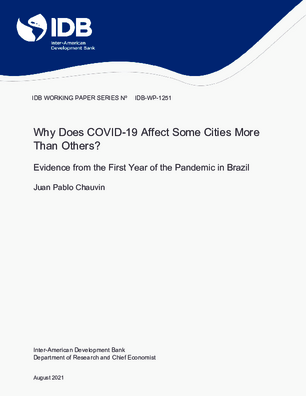Why Does COVID-19 Affect Some Cities More than Others?: Evidence from the First Year of the Pandemic in Brazil
Date
Aug 2021
Summary
This paper investigates what explains the variation in impacts of COVID-19 across Brazilian cities. I assemble data from over 2,500 cities on COVID-19 cases and deaths, population mobility, and local policy responses. I study how these outcomes correlate with pre-pandemic local characteristics, drawing comparisons with existing US estimates when possible. As in the United States, the connections between city characteristics and outcomes in Brazil can evolve over time, with some early correlations fading as the pandemic entered a second wave. Population density is associated with greater local impact of the disease in both countries. However, in contrast to the United States, the pandemic in Brazil took a greater toll in cities with higher income levels consistent with the fact that higher incomes correlate with greater mobility in Brazil. Socioeconomic vulnerabilities, such as the presence of slums and high residential crowding, correlate with higher death rates per capita. Cities with such vulnerabilities in Brazil suffered higher COVID-19 death rates despite their residents' greater propensity to stay home. Policy responses do not appear to drive these connections.




